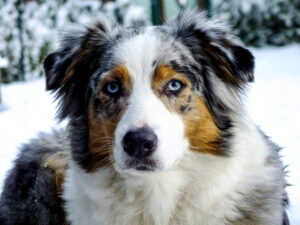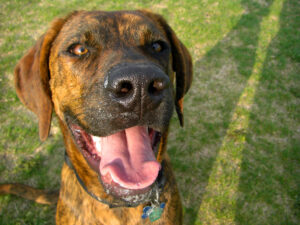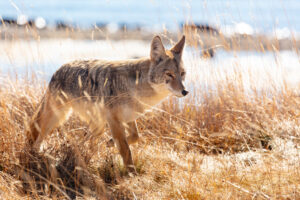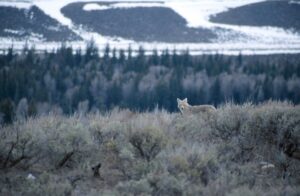 Hunting Coyotes with Dogs
Hunting Coyotes with Dogs
Hunting Coyotes with Dogs
Introduction: Hunting Coyotes with Dogs
As a professional introduction to the topic of “Hunting Coyotes with Dogs,” this article explores the traditional and increasingly popular practice of utilizing canines to track and chase coyotes in order to control populations and protect livestock. The use of trained dogs for hunting offer numerous benefits, including increased efficiency and safety for both humans and animals. This article delves deeper into the history and techniques of coyote hunting with dogs, highlighting unique details about the practice and providing interesting true stories to support the importance of this age-old hunting method.

Border Collie
Choosing the Right Breed: The Role of Smart, Defensive, and Savvy Dogs in Coyote Hunting
When choosing dogs to hunt coyotes, it’s crucial to consider their intelligence, defensiveness, and savvy demeanor. These traits help dogs protect themselves while luring coyotes into traps.
The following are some of the best dog breeds for coyote hunting:
- Smart dogs like Border Collies and Australian Shepherds are great at outsmarting coyotes.
- Defensive dogs like Anatolian Shepherds and Great Pyrenees are highly protective of their owners and property.
- Savvy dogs like Plott Hounds and Treeing Walkers have exceptional hunting skills and instincts.
- Breeds like Blue Heelers , Mountain Cur and Catahoula Leopard Dogs possess all three traits, making them versatile in hunting situations.
- Mixing breeds can also create effective coyote hunting dogs, but careful consideration and training are crucial.

Plott Hound
https://www.flickr.com/photos/dimmerswitch/
In addition to breed traits, factors like training, socialization, and physical wellness also impact a dog’s effectiveness in coyote hunting. It’s vital to provide dogs with proper care and conditioning to ensure their safety and success in the field.
To enhance a dog’s coyote hunting abilities, consider providing them with specialized training, such as scent training or agility courses. Additionally, regularly checking for physical wellness, such as eye and ear health, can improve a dog’s overall performance. Providing dogs with proper nutrition and hydration is also essential to their endurance during hunting trips.
Training the Dog: Basic Commands, Firearm Acclimation, and Bonding Routines
When it comes to hunting coyotes with dogs, it’s important to have a well-trained furry companion by your side. In this segment, we explore the various areas that you need to focus on while training your dog. We’ll touch on basic commands to help with obedience, firearm acclimation to avoid causing distress, and bonding routines to create a strong human-dog relationship. In particular, we’ll deep dive into creative exercises that can help prepare your dog for the different scenarios they might encounter when facing coyotes.
Creative Exercises: Preparing Dogs for Coyote Encounters
To ensure dogs are ready to encounter coyotes, creative exercises can be implemented. These exercises can teach dogs how to react properly when encountering coyotes to avoid harm and ensure a successful outcome.
- Step 1: Mimic Coyote Behavior – To get the dog prepared for a coyote encounter, trainers should use toys that simulate coyote movements. It makes the dog familiar with how a coyote will move and respond in different situations.
- Step 2: Increase Scent Awareness – Trainers can place various objects around the property that replicate the smell of coyotes. This will sensitize the dog’s nose and improve its sense of smell, making it challenging for a coyote to go unnoticed.
- Step 3: Introduce Distractions – To get all senses working in unison while preparing for a hunt, add distractions like loud noises or sudden movements while training your dog.
- Step 4: Encourage Positive Reinforcement – Dogs who work well under positive reinforcement do better in hunts because they receive rewards when they perform their assigned duties correctly.
It is essential to introduce creative techniques during training to build up their confidence and increase their chances of success during encounters. Besides, trainers should work closely with veterinarians to make sure their pets are healthy enough before hunting. A valuable aspect is providing adequate time for bonding between hunters and their dogs before going into a hunt. Knowing your animal’s habits and responses in different circumstances allows both parties to act cohesively when facing any danger. Pro-Tip: To reduce possible harms towards both dogs and wildlife species involved in these activities, upcoming hunters must take extensive courses before practice. When it comes to using dogs in coyote hunting, it’s a dog-eat-dog world with two main schools of thought – aggressive tolling or using a moving decoy. Choose wisely.
Using Dogs in Coyote Hunting: Two Main Schools of Thought
As a hunter, I have learned that choosing the right technique and equipment can make all the difference in the success of a hunt. When it comes to hunting coyotes, the use of dogs is a popular and effective method. However, there are two distinct schools of thought when it comes to using dogs in coyote hunting.
The first is tolling, which involves using aggressive dogs to antagonize and lure out coyotes. The second is decoy hunting, which employs the use of moving dogs to serve as decoys. In this section, we will explore these two techniques more in-depth, and discuss their respective strengths and weaknesses.
Tolling: Using Aggressive Dogs to Antagonize Coyotes
Using aggressive dogs to antagonize coyotes in hunting is known as tolling. It involves the use of proficient and defensive dogs like Blue Lacy, which are bred specially to detect and alarm coyotes. The objective is to tire out or tame down the coyote so that the hunter can shoot it comfortably.
A team consisting of two or three highly trained Blue Lacys are used in tolling, where they actively provoke the coyotes by chasing them and baiting them towards the hunter. These aggressive dogs tie up with the coyote, making it easier for the hunter to get a clean shot. Their loud barking is also vital in scaring off other potential prey from entering the area.
Tolling is not just a form of entertainment but an efficient method of controlling coyote population in areas where they pose a threat to livestock. It requires experience, skill, and consistency from both the dog handler and the dog, as any mistakes could escalate into serious consequences.
An IQ study by Stanley Coren found that Blue Lacys are among one of the smartest dog breeds, capable of understanding new commands within only five repetitions on average. Hence their obedience can be harnessed during hunting through proper training techniques such as positive reinforcement.
(Source: ‘Hunting Coyotes with Dogs’)
Who needs a decoy when your dog is already running away from you?

WIld Coyote (E)
Decoy: Using a Moving Dog as a Decoy to Lure Coyotes
A moving dog can act as a decoy to lure Coyotes during hunting. This is known as a decoy: using a moving dog as a decoy to lure coyotes. The technique involves training the dog to move quickly, darting between trees and bushes. The idea is that the Coyote sees the movement and will be drawn towards it, giving hunters an opportunity to shoot.
To train dogs for this technique, hunters use creative exercises like playing search games, tug-of-war and hiding treats. They also train them in basic commands like ‘sit’, ‘stay’ and ‘come’ for better control during hunting expeditions. Additionally, they acclimate dogs to the sound of gunfire by firing blanks or simply clapping loudly near them.
Using a moving dog as a decoy has two main benefits: it can distract prey while hunters take aim, and it can help avoid prolonged chases that could endanger both the dog and hunter. However, it’s important to note that using aggressive dogs during hunting is illegal in many states and may result in penalties if discovered.
Hunters are advised to explore other techniques like tolling: using aggressive dogs to antagonize Coyotes or call-and-response methods where hunters mimic Coyote calls with electronic callers instead of using live animals. As always, responsible hunting practices should be followed at all times to ensure safety for both hunters and animals alike.

Conclusion: The Benefits of Using Dogs in Coyote Hunting and the Importance of Responsible Hunting Practices.
Dogs have proven to be valuable assets in the practice of coyote hunting while also promoting responsible hunting practices. Through the symbiotic relationship between the hunters and the trained dogs, both parties benefit from the experience. The use of dogs increases the success rate of the hunt while decreasing the potential for dangerous coyote-human interactions. Additionally, responsible hunting practices are reinforced through the use of dogs, as they are trained to follow the hunter’s commands and assist in proper field dressing techniques.
By utilizing trained dogs in coyote hunting, hunters can increase their chances of success and promote positive hunting practices. Suggestions for responsible hunting include proper training for dogs, education on hunting laws, and awareness of local wildlife regulations. By incorporating these practices, hunters can maintain a sustainable, responsible, and ethical approach to coyote hunting while utilizing trained dogs as valuable assets in the experience.
Some Facts About Hunting Coyotes with Dogs:
The mountain cur is a popular breed chosen for hunting coyotes due to its defensive nature and aggressiveness. (Source: Team Research)
A well-trained dog is important for coyote hunting to avoid gang altercations and firearm acclimation. (Source: Team Research)
Hunting coyotes with dogs can involve two tactics, including tolling using mountain curs to antagonize coyotes and using a dog as a moving decoy. (Source: Team Research)
Training for coyote hunting may involve creative exercises, such as encouraging dogs to “get em” when approaching a dead coyote and setting up safe spaces for the dog on the property. (Source: Team Research)
Hunting coyotes with dogs is often done in dimly lit hours of dawn and dusk, and young-of-the-year coyotes and dominant adults are usually interested in another pooch, making the decoy strategy effective for drawing them in. (Source: Team Research)
FAQs about Hunting Coyotes With Dogs
What is a coyote hunting dog partnership?
A coyote hunting dog partnership is a collaborative effort between a human hunter and a specially trained dog to hunt and manage coyotes in a specific area. The dog is trained to either act as a moving decoy or to toll and antagonize coyotes, making them easy to shoot.
What breed of dog is ideal for hunting coyotes?
The mountain cur is the go-to breed for coyote work. They are smart, defensive, and savvy enough to evade a gang altercation. However, herding dogs, like border collies, can also be used for coyote hunting while serving multiple purposes, including protecting livestock.
How do you train a dog for coyote hunting?
Training a coyote hunting dog requires mastering basic commands, like sit, stay, down, and others, as well as firearm acclimation to avoid the dog being gun shy. Start with a pellet gun and work up slowly using bird dog training guidance. You should also initiate a bonding routine by bringing the dog everywhere with you instead of leaving them at home or in a kennel.
What are den sites, and why are they important when hunting coyotes with dogs?
Den sites are areas where a female coyote gives birth to and raises pups. They are important to coyote hunting with dogs because they are fiercely protected by both male and female coyotes, making them more aggressive and easier to toll into easy shooting range during the warm-weather months when pups are present.
How do you protect your dog from getting in fights with coyotes during a hunt?
The goal of a coyote hunting dog partnership is never to have the dog get in fights with coyotes. Most setups occur during the dimly lit hours of dawn and dusk, which is when coyotes are most active. Young-of-the-year coyotes, especially sibling groups, and dominant adults, typically have an interest in another dog. By using the dog as a moving decoy, hunters can limit physical interactions between the dog and coyotes.
What is a tolling hunting strategy?
A tolling hunting strategy uses the aggressive nature of mountain curs to tease and torment coyotes into easy shooting range during the warm-weather months when pups are present. Hunters scout for denning areas and then use calls to persuade coyotes to show themselves. Once the dogs get a visual, they toll and antagonize the coyotes to follow them back to their owners.
Leave a Reply